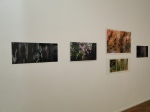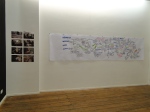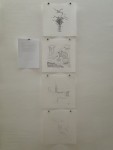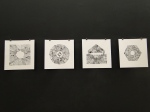http://www.nodecenter.org/events/framework.html
Vernissage: Thursday, December 15, 2011 19-22h
Thurs Dec 15-Sat Dec 17 14-19 h.
Fichte Strasse 2 10967, Berlin, Germany
Curated by: Lauren Altman and Kristin Trethewey
An Adaptable Structure for Connectivity: Hither Yon, Viktor Bedö, Sven Kröger
The Digital Gesture: Malcolm Levy, Jeremy Rotsztain, Nathaniel Stern, Santiago Taccetti
“Our time is a time for crossing barriers, for erasing old categories – for probing around. When two seemingly disparate elements are imaginatively poised, put in apposition in new and unique ways, startling discoveries often result.” McLuhan
Infrastructure can be defined as the “basic physical and organizational structures needed for the operation of a society or enterprise.” Having a solid framework facilitates shifts allowing infrastructures to respond to our needs. Information technology has shaped the world that we live in and is integral to how we function individually and collectively in society. While these new technologies have developed extensively, the preexisting models still exist and dominate certain aspects of our lives. The critical focus of this exhibition investigates different methods of working that recognize the integration of past and present infrastructures. In the first group, the concept of the public monument is questioned. The reflection of a singular cultural identity has become irrelevant as online social media forums provide new spaces for a plurality of dialogs across geographic and cultural borders. In the second group, digital tools are acknowledged for their connection to the past in order to generate a clearer understanding of our current disposition within art history and its practice.
With the ever-present consumerist instinct to discard the outmoded, the viewpoint presented here is to combine and compare past and present. As the quote by Mcluhan suggests we might find something larger than the sum of its parts by juxtaposing the seemingly dissimilar. The conclusion is not definitive, but rather offers the perspective that we may bring the past forward to connect with the present.
The architects and artists in this show form a dialogue that questions and responds to the limitations and possibilities of information technology. The exhibition begins this dialogue presenting visual documentation from a working discussion called An Adaptable Structure for Connectivity. An architect collective, an urban mapping specialist and a curator explore how ‘hybrid public space’ reflects the current social make-up and promotes intercultural exchange within a city. Hybrid space brings together the collective and the individual through virtual and physical connectivity. Through pervasive technologies, such as social media, our world is becoming increasingly connected through hybrid means. In the working discussion documentation, the group searches to find potential ways urban space can integrate this connectivity. The discussion is based on four key words: interact, connect, exchange, and adapt. Through this dialogue between the structure and the public, they imagine the potential for the hybridization of public space. The envisioned structure will travel from one city to another, adapting to different spatial and cultural contexts using online data from local participants. The resulting structure may reveal itself to withstand future adaptations by reflecting the community input.
Hither Yon created a drawing exercise derived from the concept of a hybrid maze structure created during the working discussion. The series of sixteen drawings explore how physical and virtual connectivity can be translated into a visual language using a set of individual and collective choreographed interactions. The simulation is realized by using a set of directions passed through the four artists. As the drawings develop, they strive to integrate verbal and written communication by revealing its disconnects. Two studies emerge from this series, which reflect the adaptable maze structure in Berlin and Rome. These cities are both sustained by urban plans that derive from the historic significance of a wall. They were chosen as sites that exemplify how wall formations have served as barriers, and have also been unifying and protective. These drawings reflect how the shape of these two walls can be integrated into an adaptable maze that is both disorienting and unifying through hybrid connectivity.
Looking into the past can inform our approach toward current methods for working. While the first group is exploring new models that can integrate information technology, the second group of artists interprets art historical periods using digital tools. Their work is informed by the past but use current technologies. The comparison reveals that similar individual and cultural expressions persist regardless of medium. In order to move forward, we must survey infrastructural changes as they arise and negotiate inconsistencies between past and present ideologies. Rather than categorizing artistic genres and historical periods, these artists present their work within one line of art historical thought and dialog.
Jeremy Rotsztain uses Google search results for violent films linking the cultural representation of masculine violence to the destructive art legend, Jackson Pollock. Parsing out images of explosions and gunfire he reveals strikingly similar bursts of colorful expression to the famous abstract painter. The connection finds a common aesthetic of masculine expression in both art history as well as popular culture. In Malcolm Levy, Nathaniel Stern and Santiago Taccetti’s work the misuse of digital tools becomes the focus for artistic inquiry. Building unique processes with digital scanner beds and video cameras the emergence of new aesthetics occurs while the machine attempts to perform under duress.















